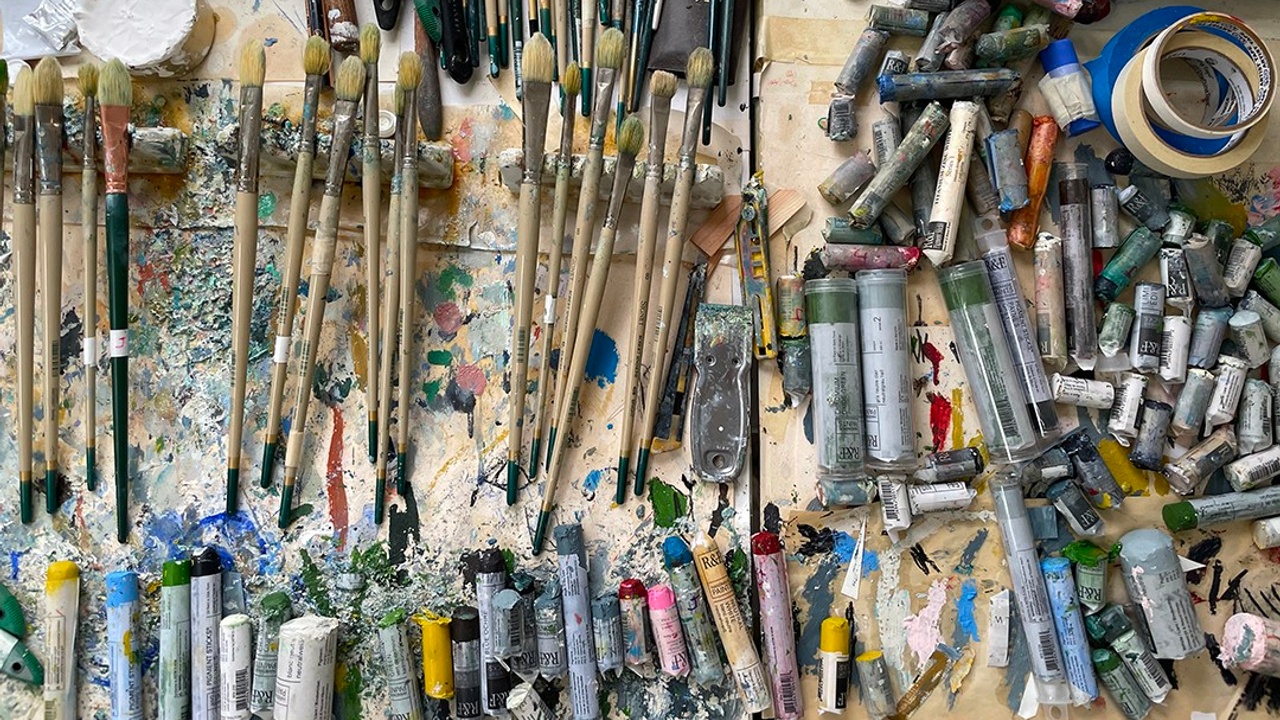
My Favorite Studio Tools and Materials
Finding the right tools and materials to suit your painting practice is an ongoing process of experimentation and discovery. I can fall in love with a certain paint or pencil and it could open up a whole new way to make marks or apply pigment. I thought it would be helpful to share some of the supplies that I use most often in my studio.
Let's start with mixing a palette. I mix my paints on Reynolds Freezer paper. I can reuse this paper about three times, mixing another palette on top of whatever colors are left over. It's fairly durable and you can make your palette any size that you need. Also, the paint moves easily on the surface. This paper is commonly found at your local grocery or hardware store.
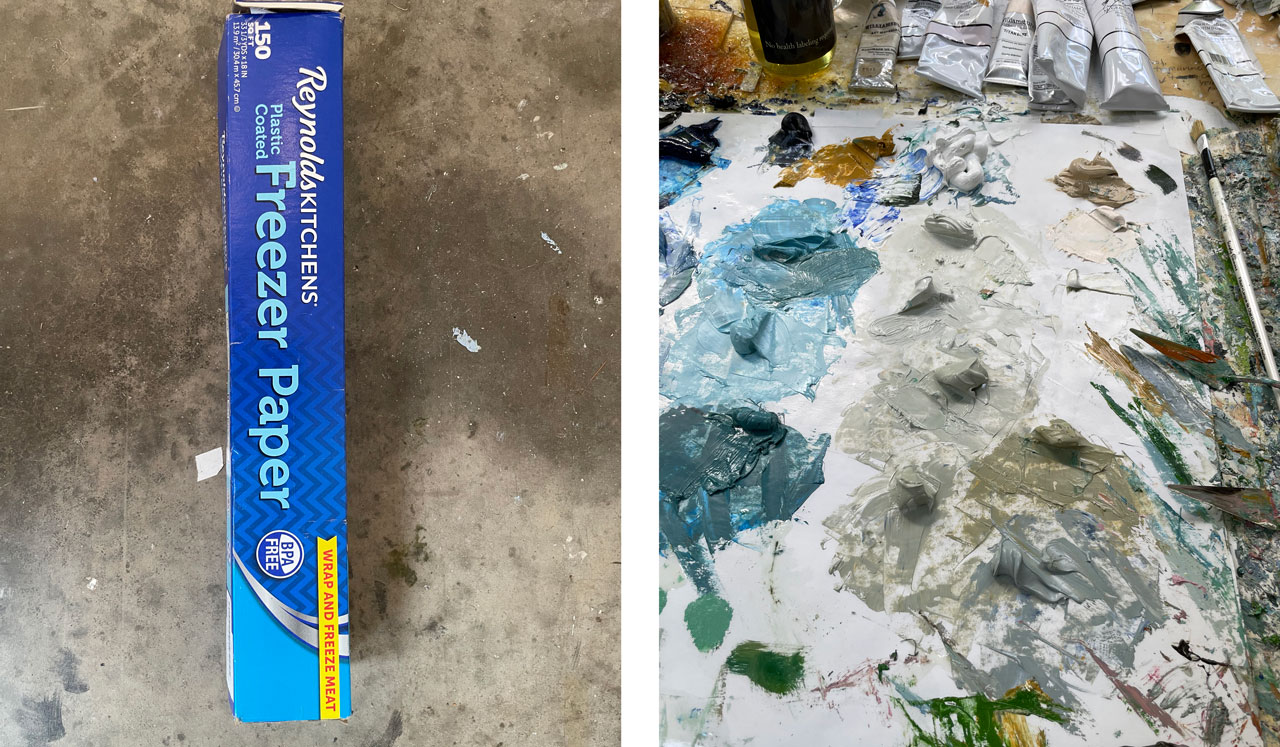
I love R&F pigment sticks! They are high quality, and have amazing texture, and color. They blend seamlessly with oil paints and naturally invite your hand to draw and experiment with mark-making.
https://www.rfpaints.com/pigment-sticks
The sticks are oil paint manufactured with enough wax for the paint to be molded into stick form. They allow the painter to draw or paint directly onto a surface without brushes, palettes, paint tubes, or solvents. They are made with the basic traditional materials: natural wax (beeswax & plant wax), linseed oil, and pigment. They are formulated to be equal in quality to the finest oil paints. They are richly pigmented, with a lipstick soft consistency that gives them the same fluidity, subtlety, and durability of traditional oil colors.
Another wonderful drawing and mark-making tool I use often is the Stabilo wax pencil. I mostly use the black. This pencil works with both oils and acrylics. It is water soluble, but it moves with both oil or water.
https://www.dickblick.com/products/stabilo-woody-3-in-1-pencils/

I use a lot of different brands of paint, depending on the color or texture. One of my favorites is M Graham Artists' Oil Colors. They are made with a walnut oil binder, an alternative to traditional linseed oil. Walnut oil provides rich, vibrant color that is naturally more alive and brilliant than traditional linseed oil. This paint is smooth and creamy! I always use the Titanium White, but have other colors as well. I believe walnut oil may take a little longer to dry, but because I am always combining this with other brands that use linseed oil, I never see a big difference.
https://www.dickblick.com/products/m-graham-artists-oil-colors/
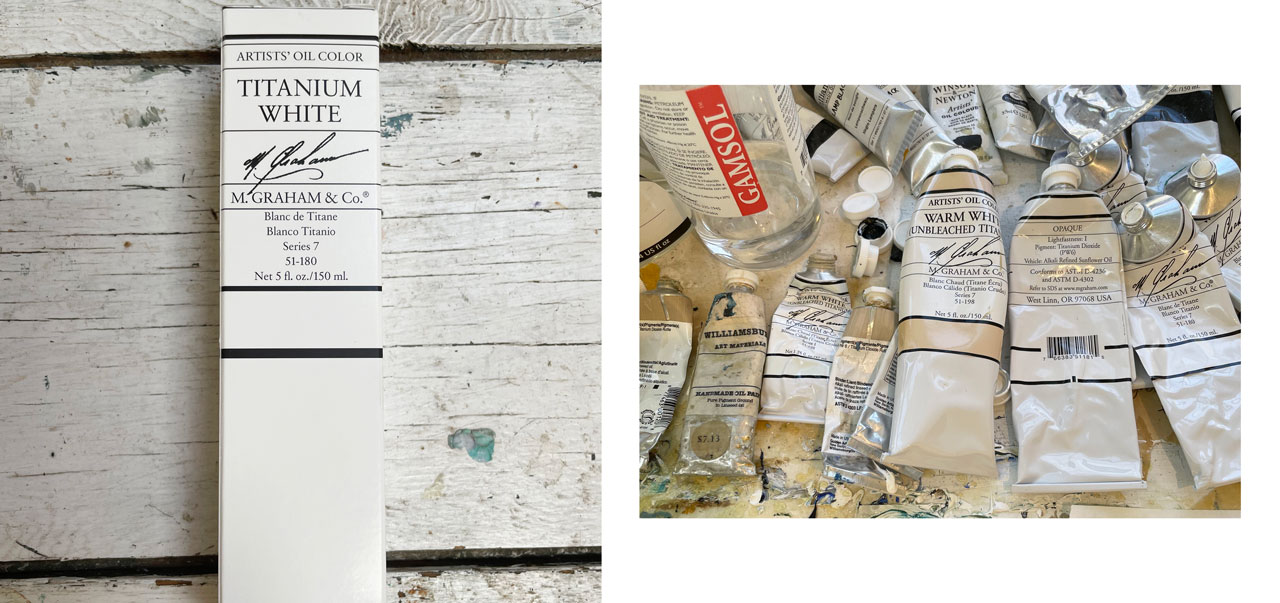
When I use acrylics, I choose Golden Open. This is a professional line of colors and mediums formulated with a unique set of working properties that stay wet longer. Their versatility allows for a wider range of techniques than traditional acrylics. Open Acrylics remain wet on the palette for extended periods of time. This means that color mixes are usable longer, resulting in less waste. Because I am primarily an oil painter, I like how these paints allow me to play with the surface longer. I can layer, and keep the paint moving, which presents more opportunities for reworking, without solvents.
https://www.dickblick.com/products/golden-open-acrylics/

Below is the brush holder I use. Some of the reviews mention that brushes slid off of this product, but I have never found that to be the case. It gets the brushes up off the table and keeps them separate from each other when involved in messy painting. A very good organizing tool.
https://www.dickblick.com/products/porcelain-brush-holder/

I have a very simple system for working on the wall. On my work wall, over the sheetrock, are plywood panels. I use blocks of wood in different positions to accommodate different size canvas. Because of this, there are many, many holes in the wall which I fill in and paint over about once a year. For larger works to hang at a slight angle, I have created a board with a one inch slat glued and screwed to the back. When this board is then screwed into the wall it juts out about 2 inches. When a larger canvas is hung, with the bottom resting on this board, it hangs at an angle, mimicking the tilt of an easel. This way, when I apply quick, energetic pressure with the brush, or push and pull with palette knife, the canvas does not jump off the wall.

Below is the glass jar I use to soak my dirty brushes. It has a coil in it, so all the paint falls to the bottom and the brushes sit on top. Pulling a brush across the smooth surface of the aluminum coil opens and separates the hairs for proper cleaning without damaging the brush. The heavy glass tank with a screw-on lid holds up to 12 oz (355 ml) of water, or solvent.
https://www.dickblick.com/products/silicoil-brush-cleaning-tank/
Inside the jar, I soak the brushes in Turpenoid Natural brush cleaner. Sometimes I leave my dirty brushes so long they are stiff with paint! But if I soak them for a few days and then use the Masters Brush Cleaner, they are good as new!
Turpenoid Natural is an alternative to traditional solvents for those concerned about health, safety, or environmental issues. Turpenoid Natural is a highly effective brush cleaner and conditioner that is specially formulated with organic ingredients to be non-toxic and non-flammable.
https://www.dickblick.com/products/weber-turpenoid-natural/

Below is the brush cleaner and hand soap I prefer. This works very well and gives off no harmful fumes or odors.
https://www.dickblick.com/products/the-masters-brush-cleaner-preserver/
The Masters Brush Cleaner and Preserver removes oils, acrylics, watercolors, stains, and varnishes from the finest sable and bristle brushes, and makes painting with nylon and other synthetic brushes a snap. Even old, hardened oil paint brushes can be restored to their original snap and luster. Your brushes will be reconditioned to perform like new.

In all of my studios over the years, I've installed a low shelf on my work wall. It's great for holding paper towels, rags and tools. Also, it's strong enough to support the painting if needed.
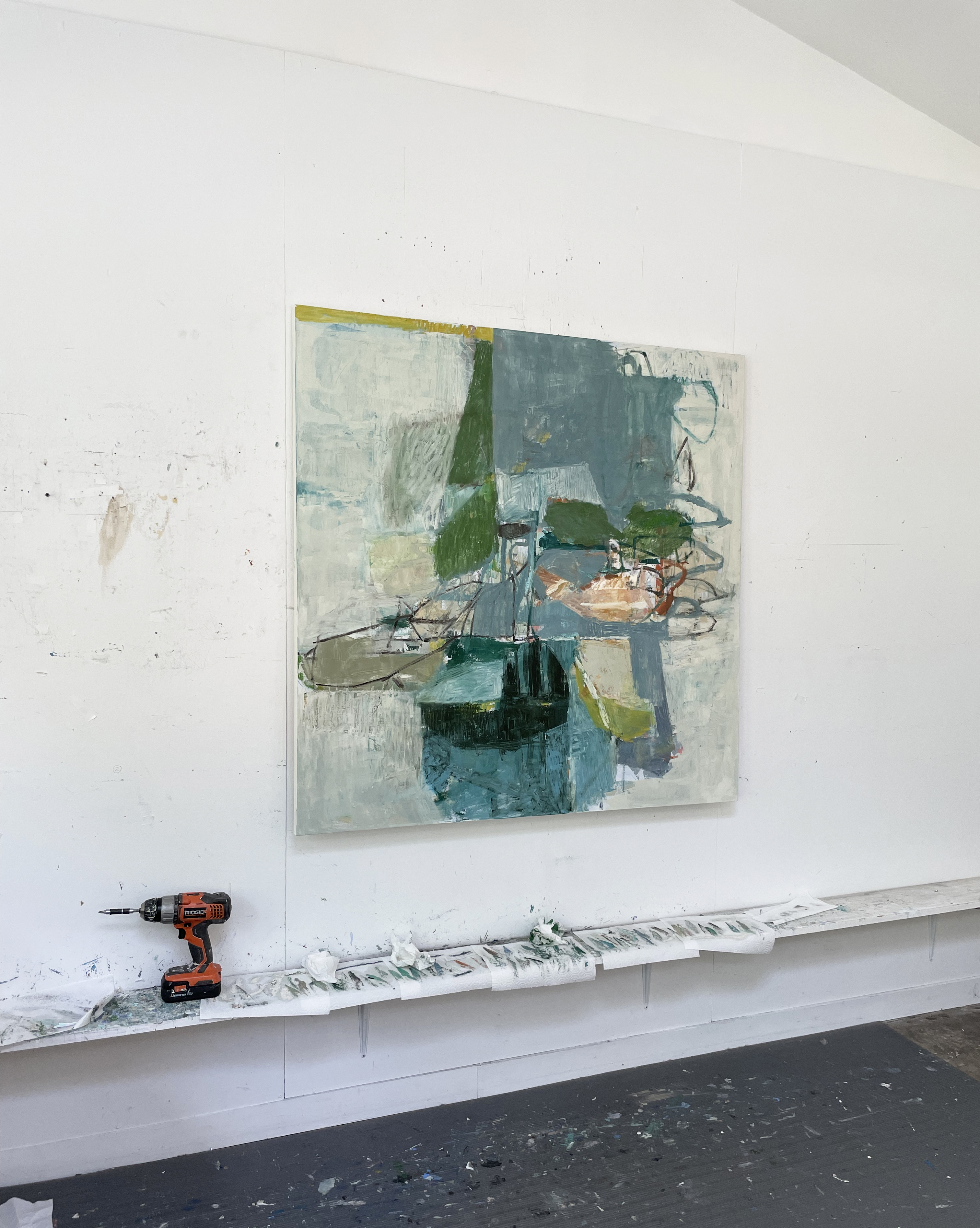
I always keep "What Painting Is" by James Elkins within reach, because I can pick it up and find some wonderful passage, like this: "A brushstroke is an exquisite record of the speed and force of the hand that made it, and if I think of the hand moving across the canvas—or better, if I just retrace it, without thinking—I learn a great deal about what I see. Painting is scratching, scraping, waving, jabbing, pushing, and dragging. At times the hand moves as if the linen canvas were a linen shirt, and the paint was a stain that had to be rubbed under running water. Some painting motions are like conversations, where the hands keep turning in the air to make a point. Others are slow careful gestures, like touching someone's eye to remove a fleck of dirt."
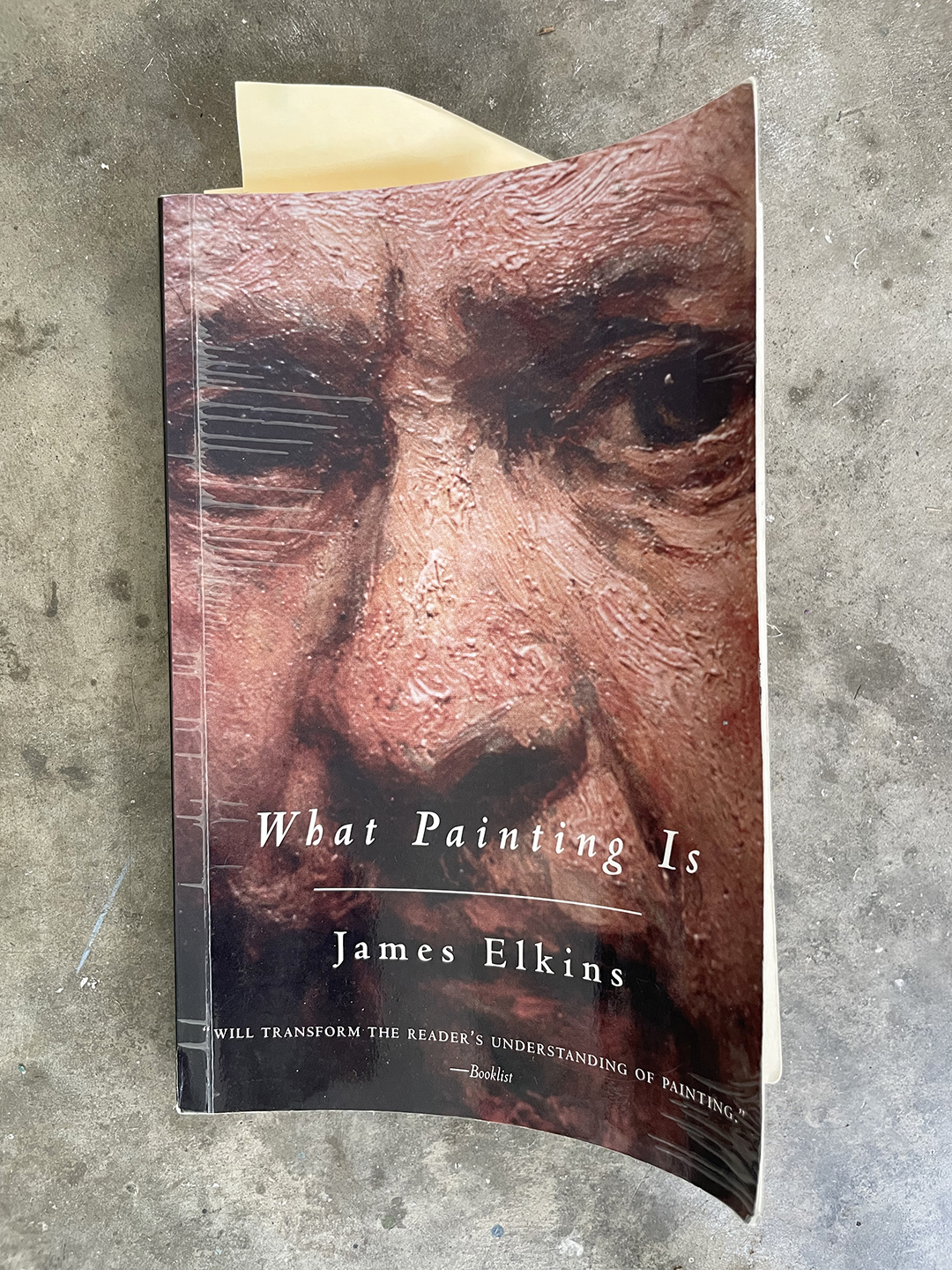
I hope some of these studio tips were helpful! It's always exciting to exchange information and ideas with other artists.
Wishing you all the best with your work in the studio; painting, reading, organizing, cleaning, procrastinating, doodling, daydreaming, brainstorming, napping, or drawing; bringing it all together to create something that makes your heart sing.
Join my monthly newsletter and never miss a post
Each month I share explorations of master artists' works, elements of abstraction, and behind-the-scenes of my own painting journey, delivered to your inbox.

